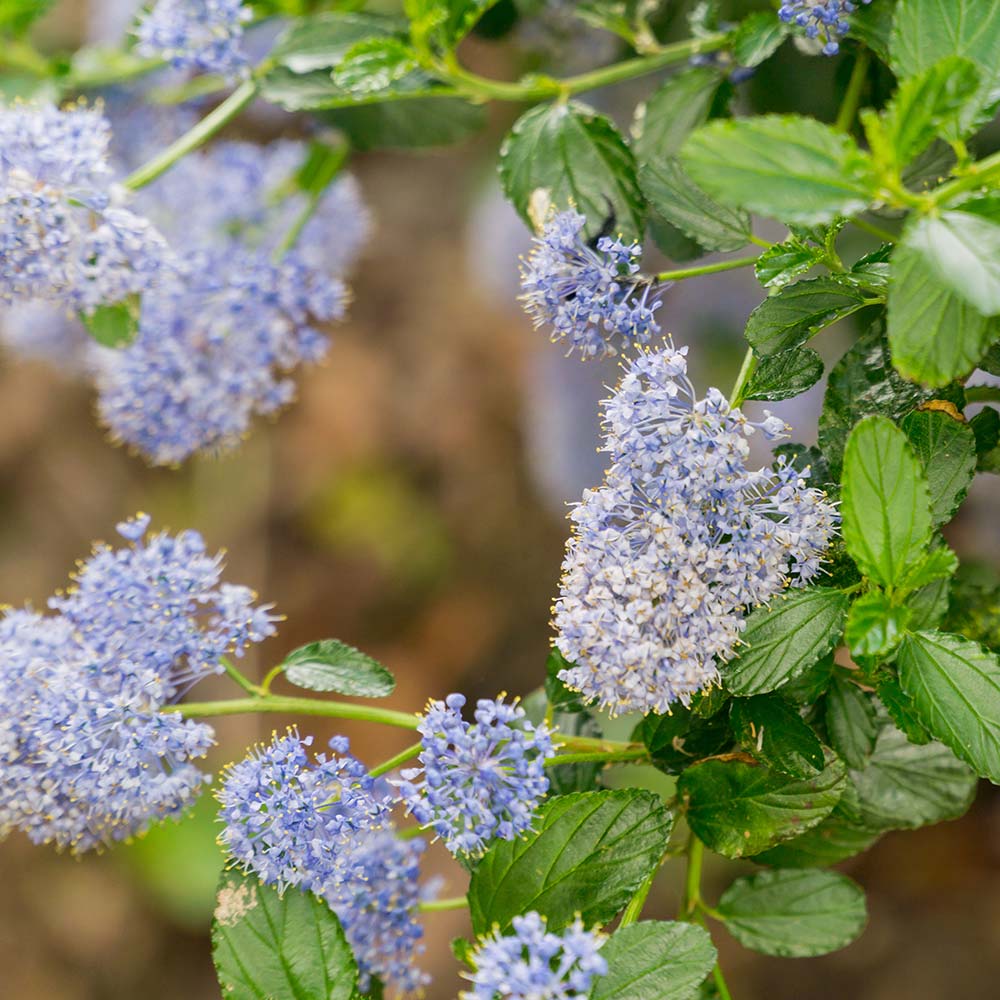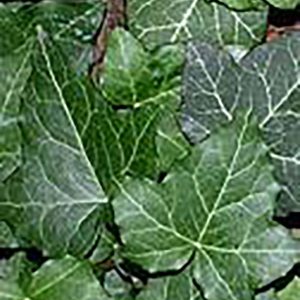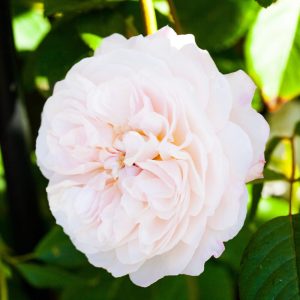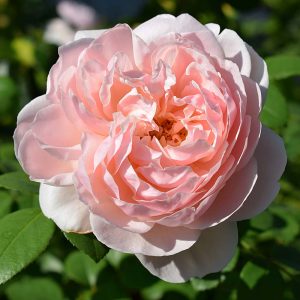Description
Ceanothus are commonly known as California lilac. Native to North America with a distribution mostly centred around the Western coast. They can be shrubs or small trees but are mostly seen in the UK grown as shrubs. Several species can be grown either free standing or as climbing shrubs , if grown free standing they will form a much denser shape whereas if allowed to climb up a fence or wall they will spread out a lot more. They are mainly grown for their highly scented, beautiful typically blue flowers.
Key Facts
- Common Name(s):Californian lilac ‘Skylark’
- Hardiness:Half hardy and would benefit from protection through Winter.
- How big will I get? Ceanothus thyrsiflorus ‘Skylark’ can grow to a height of 2m and a spread of 2m.
- Did You Know That:The dried leaves of some Ceanothus species were used as a substitute for black tea by early American settlers.
Plant Calendar
A rough guide to how this plant will change through the year.
| Jan | Feb | Mar | Apr | May | June | July | Aug | Sept | Oct | Nov | Dec | |
| Flowering Time |  |
 |
||||||||||
| Foliage Colour |  |
 |
 |
 |
 |
 |
 |
 |
 |
 |
 |
 |
| J | F | M | A | M | J | J | A | S | O | N | D |
 |
 |
||||||||||
 |
 |
 |
 |
 |
 |
 |
 |
 |
 |
 |
 |
Care Guide

Soil Requirements
Ceanothus thyrsiflorus ‘Skylark’ is a versatile plant and can cope with wet or drier soils, but prefers there to be decent drainage. This plant is not tolerant of acidic soil, it requires either a neutral or alkaline soil to grow.

Best Position
Ceanothus thyrsiflorus ‘Skylark’ prefers a sheltered position and requires full sun to thrive, this consists of more than six hours of direct sunshine per day.

Maintenance
Ceanothus thyrsiflorus ‘Skylark’ is fairly low maintenance and doesn’t require any pruning.

Pest, Diseases and Wildlife
Ceanothus thyrsiflorus ‘Skylark’ can have problems with scale insects, it can be vulnerable to certain diseases such as honey fungus.





